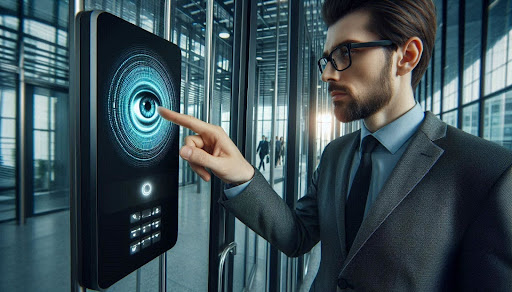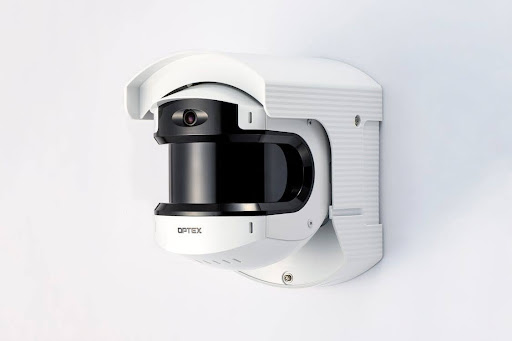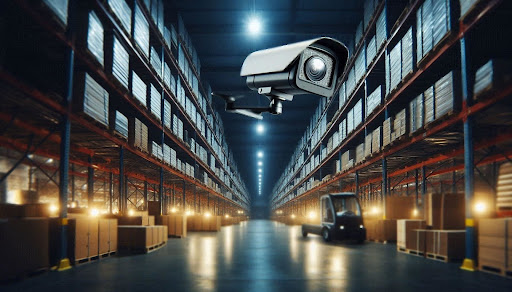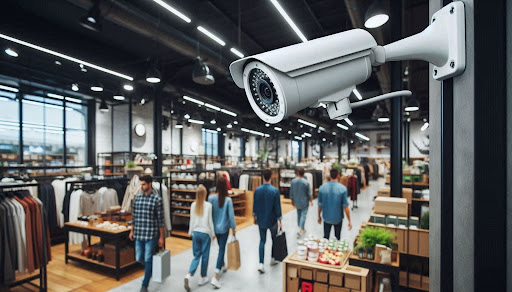
It’s no secret that the tendrils of tech are tightly wrapped around the security equipment sector, and that’s good news for people and organizations with assets to protect. What you can’t afford to do is remain out of the loop on the developments that are impacting the market at the moment, so stick around and we’ll fill you in on the details that matter in 2024.
Integrating IoT with Security Systems
The combination of IoT with security systems is continuing to gain momentum this year. The idea is that interconnected devices can create smarter, more responsive security environments that are less reliant on manual monitoring. In this context it should be no surprise to find a whole host of network-enabled hardware when you explore security devices available today.

There are perks and pitfalls to IoT’s increased hold over security, so here’s a look at these so you can make an informed procurement decision:
Benefits
Real-Time Monitoring: IoT sensors enable continuous surveillance, providing real-time alerts for unauthorized access or anomalies. With 25% of businesses suffering at least $1,500 in losses to theft each month of the last year, it’s clear action is needed here.
Enhanced Automation: Automated locks, lights, and alarms respond instantly to detected threats, boosting efficiency.
Remote Access: Manage security systems from anywhere using mobile apps, which is perfect for frequent travelers or remote site managers.
Data Analytics: Collect detailed data on usage patterns and potential vulnerabilities, which improves predictive maintenance.
Challenges
Cybersecurity Risks: Interconnected devices can be vulnerable to hacking, and there was a 400% increase in IoT malware over the course of 2023. This means ensuring adequate encryption and secure protocols is crucial.
Interoperability Issues: Different brands and standards can cause compatibility problems, which makes selecting compatible hardware/software a must.
Complexity in Setup/Management: Installing an integrated system requires expertise, and professional installation often necessary.
Implementation Example
Let’s say you run a commercial warehouse. Integrated IoT allows it to monitor inventory levels while simultaneously tracking foot traffic through connected cameras. This dual function not only tightens security but also optimizes operations by predicting stock shortages based on entry patterns.

Image Source: Microsoft Designer
Taking Advantage of AI-Powered Surveillance
Surveillance systems imbued with artificial intelligence (AI) are in the process of redefining how we monitor and secure spaces, in addition to its influence over data security . These systems use advanced algorithms to provide smarter, more precise monitoring. Here’s a look at the ins and outs of what to expect from this tech:
Key Features
Object Recognition: AI can distinguish between people, animals, and objects, which reduces false alarms.
Behavior Analysis: Monitors and identifies suspicious activities based on movement patterns, and thus enhances threat detection.
Facial Recognition: Identifies individuals from databases quickly, which in turn streamlines access control.
Benefits
Improved Accuracy: Drastically cuts down on human error in surveillance by automating routine tasks.
24/7 Vigilance: Never sleeps or gets tired, and instead constantly watches over premises without gaps in coverage.
Scalable Solutions: Easily scalable for different environments, from small businesses and even domestic premises to large campuses.
Challenges
Privacy Concerns: Potential misuse of facial recognition data raises ethical issues, so balancing security with privacy is essential. Indeed a KPMG report found that 53% of people see AI as introducing privacy problems, meaning there’s lots of awareness around this aspect.
High Costs: Advanced AI systems require significant investment in both hardware and software initially. Even if you outsource this to a third party vendor, the price of being an early adopter will not be cheap.
Data Management Complexity: Handling vast amounts of video data relies on robust storage solutions and processing power.
Implementation Example
If you’re responsible for security at a retail store, you could use an AI-powered system that not only spots shoplifting attempts but also tracks customer flow. The twofold benefits of loss prevention and gleaning insights into peak shopping times means that optimizing staff allocation is a much less complex affair.

Image Source: Microsoft Designer
Reveling in the Rise of Advanced Biometric Authentication
Biometric authentication has been part of the security sector for some time, but it’s only in 2024 that we are seeing the true extent of what the latest developments in this field can offer. Basically, it's not just about fingerprints anymore, as today we're dealing with multi-modal biometrics, combining several types of identifiers. Let’s unpack this in more detail:
Types of Biometrics
Facial Recognition: Scans and verifies facial features, and is enhanced with AI, as mentioned.
Iris Scanning: Uses unique patterns in the eye for identification.
Voice Recognition: Analyzes vocal characteristics.
Behavioral Biometrics: Monitors keystroke dynamics, mouse movements and other identifying behaviors for cybersecurity purposes.
Benefits
High Security: Difficult to replicate, as it adds a robust layer of protection over traditional methods like passwords or PINs.
Convenience: Faster access with fewer errors, since users don’t need to remember complex passwords.
Scalability: Easily integrates into various environments, from smartphones to secure business facilities.
Challenges
Privacy Concerns: Collection and storage of biometric data can be intrusive, so organizations must ensure proper safeguards are in place.
False Positives/Negatives: Environmental factors or physical changes can affect accuracy; continuous updates and calibrations needed.
Costly Implementation: Setting up advanced systems requires substantial investment initially.
Implementation Example
Consider the case of a high-security government building. Using multi-modal biometrics, an employee's identity gets verified through both iris scanning at the entrance and voice recognition at internal checkpoints. This layered approach ensures only authorized personnel gain access while maintaining a seamless user experience.

Image Source: Microsoft Designer
The Bottom Line
From a practical, commercial perspective it makes sense for businesses to prioritize the adoption of security equipment that intertwined elements of IoT, AI and advanced biometrics. This is a way of keeping physical and digital assets protected, while also ensuring the safety of employees and customers in 2024.
For homeowners, it is not as vital to ramp up security spending at the moment. That said, if you are thinking of installing equipment or upgrading an existing setup, looking for connected devices that are also AI-enabled makes sense. Biometrics is less relevant here but could bring convenience to the table if you want to move on from the traditional lock-and-key approach to access.



